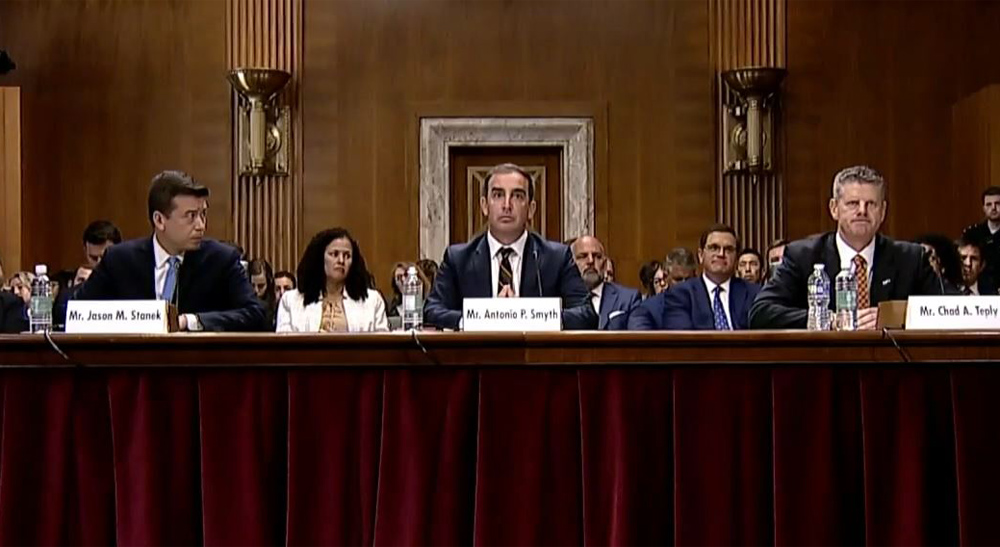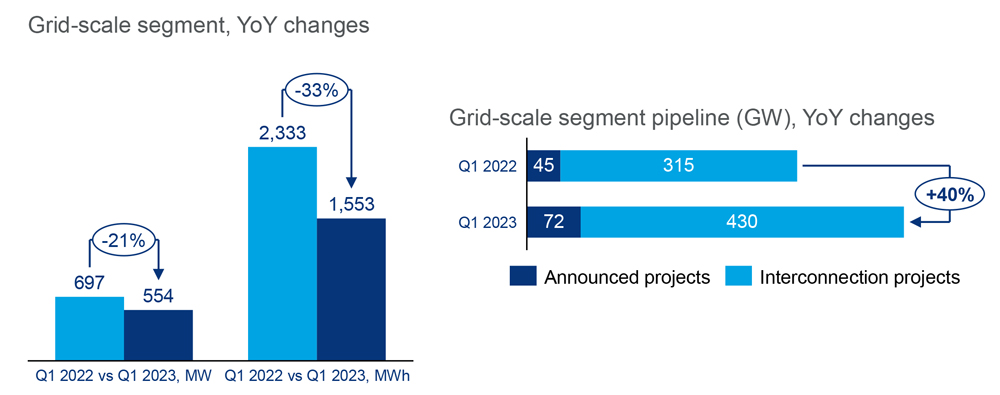New Jersey has no offshore wind turbines in operation yet, but the industry already is creating jobs — for lawyers.
The latest in a series of legal skirmishes came July 3, when developer Ørsted filed a lawsuit seeking to force Cape May County to grant permits that would allow the state’s first offshore wind project, Ocean Wind 1, to move ahead.
The suit by Ocean Wind LLC in New Jersey Superior Court claims the county illegally has withheld a road opening permit that would allow the company to do utility and environmental investigations. It follows a similar suit filed by the developer against Ocean City, which is in Cape May County, on May 4.
At issue in both suits is the developer’s plan to run cables through Ocean City, to bring power from the 1.1-GW Ocean Wind 1 to a substation in a closed coal-fired power plant in neighboring Upper Township.
The lawsuit says the failure to issue the road permits already has delayed the project and is “having a cascading and adverse effect on other permits and approvals needed for construction.”
“The county has not identified any ‘bona fide public safety reasons’ for their inaction,” according to the complaint. “Instead, the county is withholding the permit because it opposes the project.”
In a separate legal action, three opposition groups — Save Long Beach Island, Defend Brigantine Beach and Protect Our Coast NJ — filed an appeal in June in Superior Court challenging state permit approvals for Ocean Wind, claiming the project does not comply with state coastal management rules.
And Cape May on July 19 filed arguments for an appeal of the New Jersey Board of Public Utilities’ (BPU) approval of an easement that would allow Ocean Wind 1 to run cables across county land. The appeal is similar to one by Ocean City over the BPU’s approval of an easement in that municipality.
In both cases, the BPU acted under a law approved in 2021 that allows OSW projects to override local government agencies and give permitting and other approvals if they are “reasonably necessary” to the project. (See County Contests Tx Easement for NJ’s 1st OSW Project.) The county’s appeal, filed with the state Appellate Division, argues the BPU made “multiple erroneous legal findings” in granting the approval.
The county argues that although the new law enables the BPU to overrule local government bodies, the state constitutional right to “home rule” requires the agency to pay greater attention than it did to the “protection of the interests of municipalities and counties with regard to statutes that impact them.”
“BPU used the new statute to push aside the duly elected county commissioners” and took county property — the easement — for the benefit of “a private, foreign corporation,” the complaint argues. It adds that the BPU commissioners should have recused themselves from the case because the agency is a “driving force behind the installation of offshore wind facilities,” and so can’t make an impartial decision in the case.
One sign of that “bias,” the complaint argues, is that the board president and other agency staff “demonstratively wore and continue to wear lapel pins portraying the blades of offshore wind turbines.
“BPU set aside its obligation to be a fair, unbiased and impartial quasi-judicial panel,” the complaint states.
Fall Construction Target
How the courts respond to the litigation will play a key role deciding whether Ocean City 1 can meet its target of starting onshore construction in the fall. The appeals could bring the project to a halt.
Whatever happens to Ocean Wind 1 could have serious implications for later projects in the state’s OSW pipeline. The BPU approved Ocean Wind 1 in 2019, and two more projects in 2021: the 1,148-MW Ocean Wind 2 and 1,510-MW Atlantic Shores. In March, it launched a third solicitation, which could result in the award of capacity totaling 4 GW or more. (See NJ Opens Third OSW Solicitation Seeking 4 GW+.)
Opposition to the projects has risen steadily in recent months, in part over fears from the commercial fishing industry that turbines will limit their ability to fish, from tourist businesses concerned they will deter visitors and from shore property owners who fear the wind turbines will reduce the quality of life at the shore.
Opponents also have questioned whether a series of whales’ deaths are tied to preliminary undersea mapping projects that use sonar in preparation for turbine construction. State and federal researchers investigating the cases have said they see no such link.
The legal action soon may escalate, however. A July 12 release from the three groups that filed the appeal in June said they are “pursuing six lines of litigation and are preparing for at least three more major lawsuits later this year.”
OSW Impact and Legacy
Hearings held by the Bureau of Ocean Energy Management into the agency’s Draft Environmental Impact Statement (Draft EIS) on June 21 and 28 offered a snapshot of opponents’ concerns. While the majority of the 30 or speakers favored the plans, several asked pointed questions at what they see as plan elements that will hurt the shore and its residents and businesses.
Peter Himchak, a marine fishery scientist who spoke for Lamonica Fine Foods, a Cape May-based seafood company, said the commercial fishing industry had for several years told federal and state officials their biggest concern was that clam vessels could not enter the turbine zone if the turbines were less than two miles apart. Without that separation, fishing vessels couldn’t safely fish in those areas, he said. But the preliminary EIS shows the plan was “considered and rejected,” Himchak said, calling the industry “collateral damage in the industrialization of the ocean.”
“Our worst fears have been realized that we will have to live now with likely 27 exclusion zones where we can no longer operate,” he said, referring to lease areas approved by the federal government.
Several speakers said the 45 days allocated by BOEM for public comment was too short a time for the public to digest and respond to a 900-page report.
Richard Jones urged BOEM to extend by six months the comment period because the “rush to approve multiple ocean wind industrial scale power factories in pristine areas is overwhelming the public’s time to respond properly.”
Turning to the whale deaths, Jones suggested that the real figure of deaths could be higher because the whale bodies wash ashore only when the current is in that direction. “Who knows how many drifted away offshore uncounted?” he asked.
Jones added that “intense noise generated by hydro hammers driving 4-million-pound, 30-foot diameter three-inch thick steel monopiles is harmful to marine life.” He said he had been told the piling process can’t be stopped once it starts even if a whale arrives in the area because it would damage the foundation.
In response, Greg Fulling, a marine biologist with BOEM, said whales are protected from piling noise by a process in which “protected species observers” (PSO) on the turbine platform scour the sea for whales for up to 60 minutes before piling. If none are seen, the work starts with about an hour of the piling hammer used at “reduced power with minimal strikes,” he said.
This is a “ramp up procedure … to essentially warn the animal of the loud noise,” he said. “If there is a whale detected within the shutdown zone, the PSO will call for a shutdown.”
Decommissioning Turbines
Stephanie Adams, a resident of Fair Haven, a shore town about 90 miles north of the areas most affected by the proposed turbines, said New Jersey should consider putting solar panels along the state highways, rather than turning to offshore wind, due to the harm likely to marine life.
“I understand it seems like a good idea,” she said of the OSW projects. “But the scope and the scale that we’re proposing is unprecedented,” she said, adding “there is very limited research” on how it will impact the ocean.
She asked who would be responsible for decommissioning the turbines after 30 years, at the end of their expected life.
“Presumably that will fall on taxpayers, and we’ll have a graveyard of broken turbines in our oceans,” she said.
William Waskes, project coordinator for BOEM, said under BOEM’s rules Atlantic Shores has to decommission the turbines within two years of the end of its 25-year lease. The developer has to submit an application stating what facilities will be removed, the schedule for the work and the plans for transportation and disposal of the facility, Waskes said.
“Decommissioning of an offshore wind facility is at the sole cost of the lessee,” he said. “They’re the ones paying for the decommissioning.”
In response to a question about why the turbines are so close to the shoreline, Waskes said New Jersey officials working with BOEM decided those distances between 2010 and 2012 in a public consultation process that sought to minimize conflicts with other ocean users in the area and protect ecologically sensitive areas.
“It was based on the technology limitations and trends at the time,” he said.





